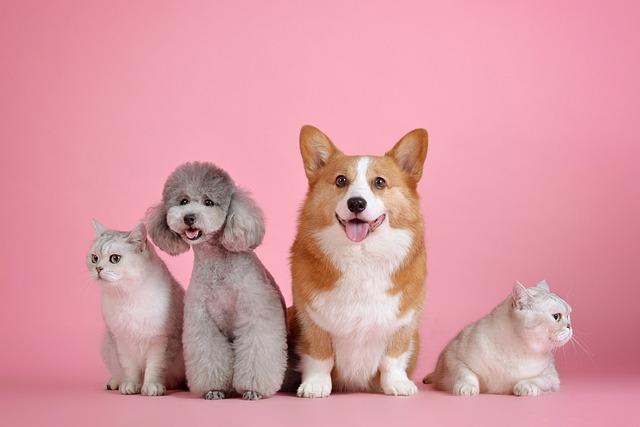Bringing a new pet into your home is an exciting and joyful experience, but it can also be a time of uncertainty, especially when you already have a beloved dog in your family. Ensuring a smooth introduction between your dog and the new pet is crucial for fostering a harmonious household. This guide will walk you through thoughtful and effective steps to help your furry friend welcome their new companion with open paws. With patience, understanding, and a little bit of planning, you can set the stage for a positive relationship that enriches both your pets’ lives and your own. Let’s embark on this journey together, transforming what might seem like a daunting task into a heartwarming adventure.
Preparing Your Home for a Smooth Introduction
Creating a welcoming environment is crucial to ensuring a harmonious start for your new pet and your current dog. Begin by establishing separate spaces for each pet. This not only gives them both a safe haven but also allows them to gradually get accustomed to each other’s scent without direct confrontation. You can do this by designating different rooms or using baby gates to create boundaries.
Make sure to stock up on essentials for both animals. This includes:
- Separate food and water bowls
- Individual bedding
- Distinct toys
- Separate litter boxes or designated potty areas
Maintain routines as much as possible. Dogs thrive on consistency, so sticking to your current pet’s schedule will help alleviate stress. Introduce the new pet to this routine gradually, allowing them both to feel secure in their environment. A smooth transition starts with a thoughtful setup, ensuring that both pets feel loved and secure from the get-go.
Understanding Canine and New Pet Body Language
Recognizing and interpreting the body language of both your dog and the new pet is crucial for a harmonious introduction. Dogs communicate primarily through their body posture, facial expressions, and tail movements. A wagging tail doesn’t always mean a happy dog—it can also indicate excitement, agitation, or even aggression, depending on the speed and direction of the wag. Similarly, a lowered body and tucked tail might signal submission or fear. On the other hand, cats often express discomfort through hissing, arched backs, or flattened ears, while small animals like rabbits might thump their hind legs when feeling threatened.
- Calm and Relaxed: Both pets have loose, relaxed bodies and soft eyes.
- Cautious Curiosity: Your dog might sniff the new pet while maintaining a slight distance.
- Signs of Stress: Panting, pacing, or excessive yawning in dogs; hiding or refusing to eat in other pets.
By understanding these cues, you can better manage the introduction process, ensuring both your dog and the new pet feel safe and secure in their shared environment.
Creating Positive First Impressions for Lifelong Friendship
When introducing your dog to a new pet, it’s essential to create a welcoming environment that fosters mutual respect and curiosity. Begin by choosing a neutral location where neither animal feels territorial. Leash both pets initially to maintain control, allowing them to sniff and observe each other from a safe distance. Watch their body language closely; relaxed postures and wagging tails are positive signs, while growling or raised fur might indicate discomfort.
To ease the transition, consider the following tips:
- Swap Scents: Before the first meeting, exchange bedding or toys between the two animals to familiarize them with each other’s scent.
- Short Sessions: Keep initial interactions brief and gradually increase the time they spend together as they become more comfortable.
- Positive Reinforcement: Reward both pets with treats and praise for calm behavior to reinforce positive associations.
Remember, patience is key. Each pet will adjust at their own pace, so give them the time they need to form a lasting bond.
Guided Interactions and Building Trust
Building trust between your dog and a new pet involves carefully managed interactions. Start by choosing a neutral space for their first meeting, as this can help reduce territorial behavior. Keep both animals on a leash and maintain a safe distance, allowing them to observe each other without direct contact. Gradually, let them approach at their own pace while you offer calm reassurance.
As the interactions progress, ensure they are positive and rewarding. Consider these steps to facilitate a smoother introduction:
- Swap scents: Exchange bedding or toys between your dog and the new pet before they meet.
- Short sessions: Keep initial meetings brief and gradually increase the duration as they become more comfortable.
- Positive reinforcement: Reward both animals with treats and praise for calm behavior.
Remember, patience and consistency are key. Each animal has its own pace, and respecting this will nurture a trusting relationship.

